Crown molding adds that special touch of class to any room, as shown in Figure 1, 2, 3 & 4.
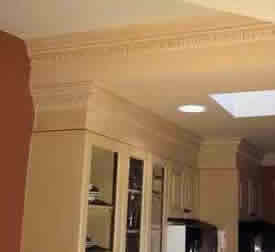
Figure 1 - Crown molding
Where twenty years ago crown molding was only available in wood, crown molding now comes made of a variety of materials that include wood, Styrofoam, polyurethanes and molded plaster, making it affordable to most homeowners and many of the new materials have made the installation easier allowing the DIY home handyman to incorporate crown moldings in any home improvement project.
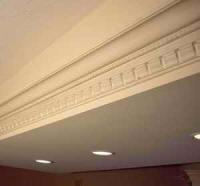
Figure 2 - Crown molding
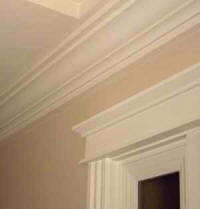
Figure 3 - Crown molding
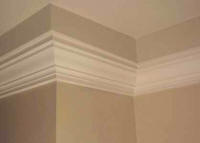
Figure 4 - Crown molding
Installing crown molding can be a finicky project, it takes patience and care to end up with a proper finished appearance. It is much easier to install crown molding if the intent is to have a painted finish rather than installing a wood product that is to be left with its natural finish or to be stained.
The installation problem faced by most DIY home handymen is that house walls are not square and they are not true. Most walls bow in at the center as seen from end to end and bow in at the center as seen top to bottom as shown in Figures 5 and 6.
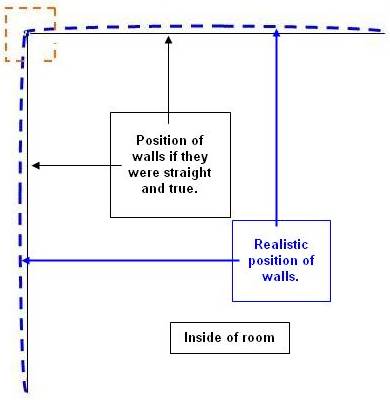
Figure 5 - Bow in Walls
Although, the bow is generally not visible to the naked eye, on a 10 foot wall it can be as much as 3/8 inch. That bow, which would not normally present a problem, presents a huge problem when trying to align an inner or outer miter joint between two pieces of crown molding.
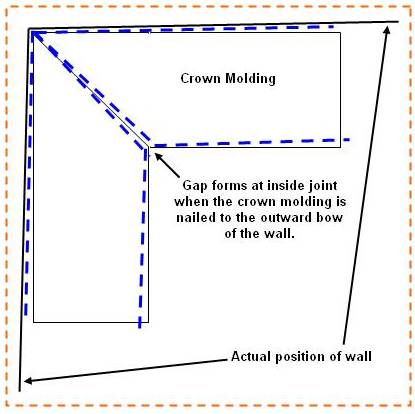
Figure 6 - Bow in Walls
If you are using a crown molding that is not overly ornate, the gaps that are formed are easily filled with a wood fill or spackling compound, if the plan is to paint the crown molding. However if it is an ornate crown molding and/or natural wood or stained wood appearance, that you are looking for, then the jointing of the pieces becomes much more critical, as any of the fill products will not accept stain or wood finishes in the same manner as the wood molding. In this case a lot of trial and error is generally required to obtain an accurate joint.
